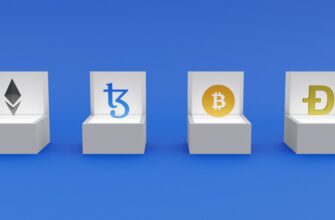Introduction to XRP Smart Contracts
XRP, the digital asset native to the XRP Ledger (XRPL), has long been recognized for its speed and efficiency in cross-border payments. However, the integration of XRP smart contracts is unlocking new possibilities, positioning the XRPL as a contender in decentralized finance (DeFi) and blockchain automation. This article explores how XRP smart contracts work, their benefits, real-world applications, and what the future holds.
What Are XRP Smart Contracts?
XRP smart contracts are self-executing agreements coded directly into the XRP Ledger. Unlike Ethereum’s Turing-complete contracts, XRPL’s approach emphasizes simplicity and security. While the ledger wasn’t originally designed for complex smart contracts, solutions like Hooks (lightweight smart contracts) and layer-2 platforms (e.g., Flare Network) have expanded its capabilities. These tools enable automated transactions, conditional payments, and decentralized applications (dApps) while leveraging XRP’s 3-5 second settlement times.
Benefits of XRP Smart Contracts
- Speed & Scalability: The XRPL processes 1,500+ transactions per second (TPS), far outpacing Ethereum’s 15-30 TPS.
- Low Cost: Transactions cost fractions of a cent, making microtransactions feasible.
- Sustainability: XRPL uses a consensus mechanism, consuming minimal energy compared to proof-of-work blockchains.
- Interoperability: Bridges like Axelar enable cross-chain interactions with Ethereum, Bitcoin, and others.
- Regulatory Clarity: XRP’s status as a non-security (per 2023 court rulings) reduces legal risks.
Use Cases for XRP Smart Contracts
- Cross-Border Payments: Automate currency conversions and settlements for institutions.
- DeFi Platforms: Build decentralized exchanges (DEXs) or lending protocols with XRP as collateral.
- Supply Chain Management: Track goods and release payments upon delivery confirmation.
- Tokenized Assets: Represent real-world assets (e.g., real estate) as tokens on the XRPL.
- DAO Governance: Enable community-driven decision-making via token-based voting.
Challenges and Limitations
Despite their potential, XRP smart contracts face hurdles. The XRPL’s limited scripting functionality restricts complex dApps, pushing developers to layer-2 solutions. Regulatory uncertainty around Ripple’s ongoing SEC case may also deter institutional adoption. Additionally, the ecosystem needs more developer tools and tutorials to compete with Ethereum’s mature environment.
The Future of XRP Smart Contracts
Upcoming XRPL upgrades, such as the Hooks amendment, aim to enhance native smart contract support. Partnerships with projects like Flare Network could bridge XRP to Ethereum-style dApps. As regulatory clarity improves, expect increased enterprise adoption, particularly in payment solutions and CBDCs (Central Bank Digital Currencies).
FAQs About XRP Smart Contracts
Q: How do XRP smart contracts differ from Ethereum’s?
A: XRPL contracts prioritize speed and cost-efficiency over complexity, though layer-2 solutions add flexibility.
Q: Are XRP smart contracts secure?
A: Yes—the XRPL’s consensus mechanism ensures robust security, with no history of hacks since 2012.
Q: Can XRP smart contracts interact with other blockchains?
A: Through bridges like Flare, XRP can integrate with Ethereum, Binance Smart Chain, and more.
Q: How do I start building with XRP smart contracts?
A: Explore XRPL documentation, experiment with Hooks, or use SDKs like xrpl.js.
Q: Is the XRP Ledger decentralized?
A: Yes—it uses a unique node list (UNL) consensus, operated by 150+ validators globally.
Conclusion
XRP smart contracts merge the ledger’s payment efficiency with programmable automation, opening doors for DeFi, enterprise solutions, and cross-chain innovation. While challenges remain, ongoing technical and regulatory developments position XRP as a blockchain to watch.








